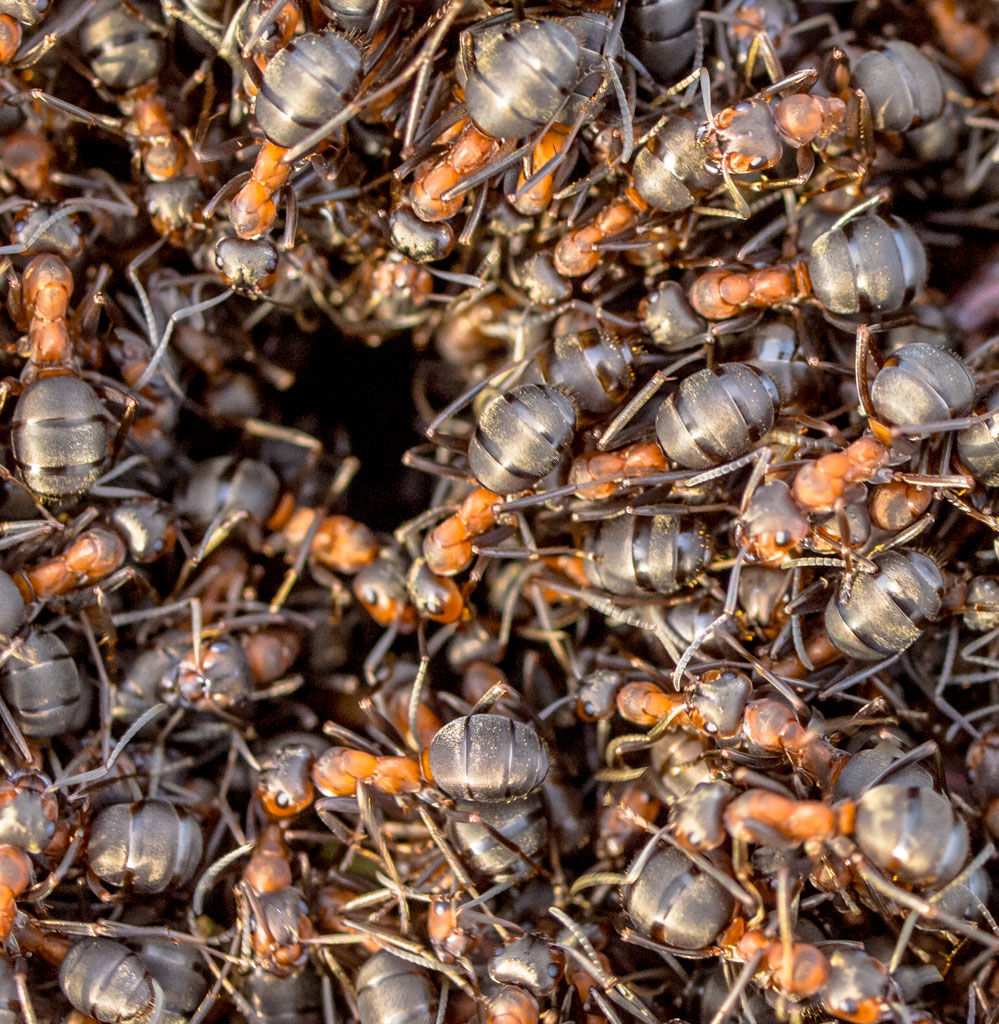
Schedule a service:
Ant Pest Control in Utah
Ants come in a variety of species, each with its own unique traits from where they nest, to how far they will forage for food, their destructive abilities, as well as other physical and reproductive differences.
Fire Ant Extermination
Brought here accidentally from South America, fire ants have made themselves at home around the United States and here in Utah. Fire ants are omnivores that will eat almost any type of animal or plant material, including other insects, ground animals, seedlings, plant bulbs, young trees, fruits, and grass. When foraging for food, the worker ants will loop within 100 feet of the nest. Worker ants consume food in the field. They keep some for themselves in one stomach and store the rest in another stomach, which will be shared with the rest of the colony by regurgitation.
Much more aggressive than other ant species, stepping on a mound can result in a frenzy of angry ants that will sting if given the opportunity. Alpine uses a number of ecologically safe ways to eliminate the Queen and the rest of the colony.
Carpenter Ants Extermination
Members of the insect order Hymenoptera, carpenter ants can be a nuisance as well as cause damage to wood in and around homes. carpenters ants utilize cavities in wood, particularly in decaying condition. The worker ants are sterile and do not have wings. Higher up in the social structure are the winged reproductive ants. These ants are often mistaken for termites. Carpenter ants have a narrower waist and straighter antennae than termites. Unlike termites, carpenter ants do not eat the wood. Most of the wood damage done by carpenter ants is caused by tunneling through wood in search of new nesting areas. A thorough inspection of all possible nesting locations and wall voids will help to determine the direction they travel, leading to the nest site.
Clients testimonials
We haven’t seen any bugs since he came out. He was able to explain the importance of having them do an initial spray, then a second (egg cycle). Thanks for all your help!
Caitlin Huppi,, Salt Lake City, UT
Troy was very friendly, showed up on time and was able to complete the entire yard and foundation in a quick time. this is the second year using Alpine and have been very pleased.
Meranda Willis
He was very professional, introduced himself, explained everything well and did a thorough job. He said if we notice after a week that spiders aren’t going away to call and he will come back out.
Emily Wettstein, Salt Lake City, UT
Showed up on time, was not invasive to my privacy and he answered all my questions and educated me on the matter. This is the second year in a row using Alpine and I will be having them come back again next time.
Mike Retone, Salt Lake City, UT
Alpine Pest Control was the best pest control service I’ve ever used. They were on-time, cost effective, easy to get appointments and were quick to respond to calls. I highly recommend using Alpine Pest Control and ask for Troy as your technician!
mbh1978, Salt Lake City, UT
WORKING

